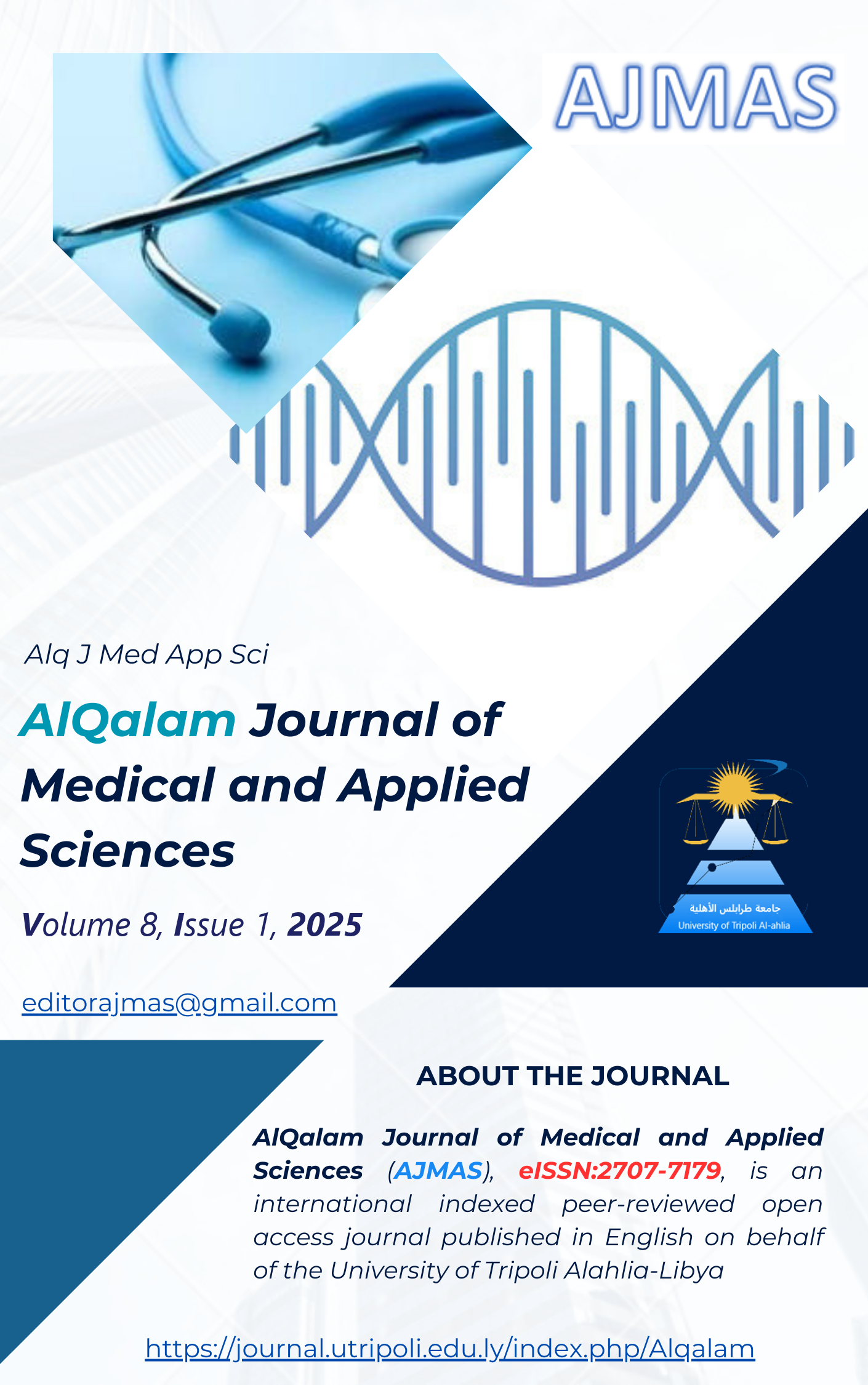Tumor Budding: A Prognostic Marker of Aggressiveness and Metastatic Potential in Epithelial Cancers, with a Focus on Colorectal and Urothelial Carcinomas
DOI:
https://doi.org/10.54361/ajmas.258132Keywords:
Tumor Budding, Cancer Invasion, Prognostic BiomarkerAbstract
A hallmark of malignancy is the ability of a tumor to disseminate and metastasize, a process that requires specific cellular adaptations. The American Joint Committee on Cancer developed the TNM staging system to classify malignancies and guide treatment strategies, reflecting the biological behavior and clinical outcomes of cancers. Despite its usefulness, ongoing efforts aim to identify additional diagnostic and prognostic parameters to improve accuracy and treatment outcomes. One such parameter is tumor budding, a distinctive morphological feature observed in epithelial cancers. tumor budding is characterized by single tumor cells or small clusters of up to four cells that detach from the invasive front and invade the surrounding stroma. First described in colorectal cancer, tumor budding has since been widely investigated and recognized as a predictor of adverse outcomes, including lymph node invasion, local and distant metastasis, lymphovascular invasion, and poor survival rates across multiple cancer types. Independent of pathological stage, tumor budding correlates with aggressive tumor behavior, highlighting its prognostic significance. In urothelial cancers, tumor budding has been linked to stage progression, distant metastasis, and survival outcomes, particularly in non-muscle invasive bladder cancer and muscle-invasive bladder cancer. This review examines the mechanisms underlying tumor budding, its clinical significance across various tumor types, and its prognostic implications in epithelial cancers. Understanding these factors could provide valuable insights into integrating tumor budding into routine pathological assessments and improving cancer management strategies.
تُعد قدرة الورم على الانتشار وتكوين النقائل السمة المميزة للأورام الخبيثة، وهي عملية تتطلب تكيفات خلوية محددة. وقد طورت اللجنة الأمريكية المشتركة للسرطان نظام تصنيف الأورام لتصنيف الأورام الخبيثة وتوجيه استراتيجيات العلاج، مما يعكس السلوك البيولوجي والنتائج السريرية للأورام. وعلى الرغم من فائدته، لا تزال الجهود مستمرة لتحديد معايير تشخيصية ومقاييس تنبؤية إضافية لتحسين دقة التصنيف ونتائج العلاج. يُعد تبرعم الورم أحد هذه المعايير، وهو ميزة مورفولوجية مميزة تُلاحظ في السرطانات الظهارية. يتميز تبرعم الورم بوجود خلايا خبيثة منفردة أو في تجمعات صغيرة تصل إلى أربع خلايا تنفصل عن جبهة الورم الغازية حيث تغزو النسيج المحيط. وقد تم وصف هذه الظاهرة لأول مرة في سرطان القولون والمستقيم، ومنذ ذلك الحين تم التحقيق فيها بشكل واسع والاعتراف بها كمؤشر لتوقع النتائج السلبية، بما في ذلك غزو العقد الليمفاوية، والانتشار الموضعي والنقائل البعيدة، والغزو لأوعية الدم واللمف، وكذلك مؤشر للمعدلات المنخفضة للبقاء على قيد الحياة ببالرغم من العلاج، وهذا في أنواع عديدة من السرطان. وبغض النظر عن المرحلة المرضية، يرتبط تبرعم الورم كعلامة على السلوك العنيف للورم السرطاني مما يبرز أهميته التنبؤية. وكمثال سرطانات الظهارة للمسالك البولية، ارتبط تبرعم الورم بتطور المرحلة المرضية، والإنتشار الورم، وغير لك لا سيما في سرطان المثانة. تستعرض هذه المراجعة للآليات الكامنة وراء تبرعم الورم، وأهميته السريرية في أنواع مختلفة من الأورام، وآثاره التنبؤية في سرطانات الظهارة البولية. إن فهم هذه العوامل يمكن أن يوفر رؤى محددة وقيمة لإدماج عامل تبرعم الورم في التشخيص والتقييم الباثولوجي للحالات المرضية بحيث يصبح روتيني ولابد منه ولما له من تأثير أيضاً في تحسن استراتيجيات التشخيص والعلاج في الأورام السرطانية
Downloads
Published
How to Cite
Issue
Section
License
Copyright (c) 2025 Khadija Slik

This work is licensed under a Creative Commons Attribution 4.0 International License.















